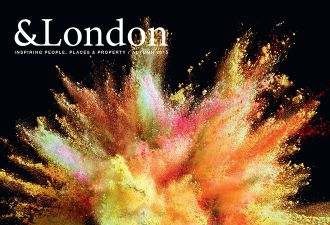
The best of the world’s spice crop comes through London, keeping alive a trade that has helped to shape the modern city.

The best of the world’s spice crop comes through London, keeping alive a trade that has helped to shape the modern city.
'You guys have always loved exotic blends,’ says Atul Kochar, chef at Michelin-starred restaurant Benares. ‘The mixed spice that you use at Christmas for cakes and biscuits – with cinnamon, nutmeg and allspice – is just a British version of garam masala.’
Born in north-east India and a long-term resident of London, Atul believes you can now find more rare spices in the capital than you would ever find in his home country. It’s a trade driven by the city’s innovative chefs, who are constantly seeking ever-more inventive ways to combine and create flavours.
‘That’s what makes London interesting,’ he says. ‘You get spice mixes from as far afield as Burma and Morocco, Algeria and Tanzania. You name it, it’s available here.
London’s fascination with spice has a long and colourful history. The city has been buying and selling spice since medieval times. It became such a valuable commodity that much of London’s wealth and prestige from the Elizabethan era onwards was generated by our ascendancy as a spice-trading city.
It was certainly a profitable business. In 1620, the East India Company purchased 250,000lb (113,000kg) of pepper in south-east Asia at a cost of £26,041. It was sold in London for £208,041 – a profit of nearly 800%. Pepper wasn’t the only expensive spice – during the 17th century, nutmeg was as valuable as gold.
'Spice has had a massive influence on shaping the capital,’ says Rob Smith, a guide with walks company Footprints of London. ‘The history is plain to see in our street names. Take Saffron Hill, for example. Importing saffron from the Mediterranean was expensive in medieval times, so the race was on to cultivate it in England. The winner was the Bishop of Ely, who grew it in the herb gardens of his London palace, the site of which is marked by Saffron Hill in Holborn.’
View the full article in &London Autumn 2015.
